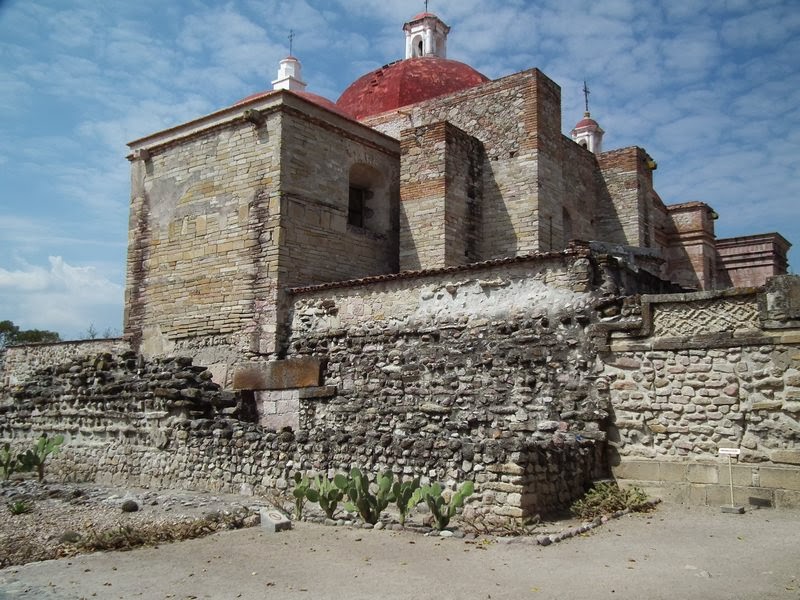The city of Oaxaca de Juarez is the capital of the state of Oaxaca. The city has a population of about 265,000 and is located at an elevation of 4,102 ft.
On Day 4 of our journey, we had breakfast at a restaurant on the zocolo (town square) and then drove east of Oaxaca about 24 miles (38k) to the ruins of Mitla which was founded by the Zapotec Indians. The Spanish arrived in the area in 1521 A.D. Archeologists discovered the site in 1934. They have dated the original buildings to1300 to 1400 A.D. The cost to enter the site was 43 pesos each (Less than $4 CAD) plus a tip for the English speaking guide.
 |
| our tour group approaching the ruins |
 |
This Spanish church was built on top of the original Zapotec temple,
which was the common practice to wipe out the original religion. |
The geometric designs on the buildings were unusual as they were formed by layering the blocks rather than carving images into the stones. These designs will be found in the rugs and cloth made in the area.
 |
| little is left of the stucco cover with pictoral stories originally on the buildings. |
Note in this picture and the one above that wall on this building is leaning outward. This was by design to keep the rain water from dripping down the walls and turning them black with mold. As you can see, only the top part of the wall is blackened. Pretty smart engineering!
 |
| Outward leaning wall. |
 |
| Our guide explains the designs on the walls. |
 |
| The design is made of individual stones, carefully layered. |
The construction techniques used by this long past culture were amazingly advanced, No mortar was used and the blocks were tightly fitting. The roofs were made of wood and palm leaves in case of earthquakes, making it safer for the occupants. It is said the area often experiences three quakes per day, mostly just gentle, but often destructive.
 |
| crawling into the tomb beneath one of the buildings |
 |
| the opening was less than 3' tall so we crawled |
 |
| it was a tight squeeze -- only room for about 5 people at the most once you were at the end of the tunnel |
After we finished at the ruins, we ventured into the shops along the streets in the town of San Pablo de Mitla which is known for its textiles.. We toured a factory where the weavers made fine material for table cloths, drapery, blouses, dresses.


























No comments:
Post a Comment